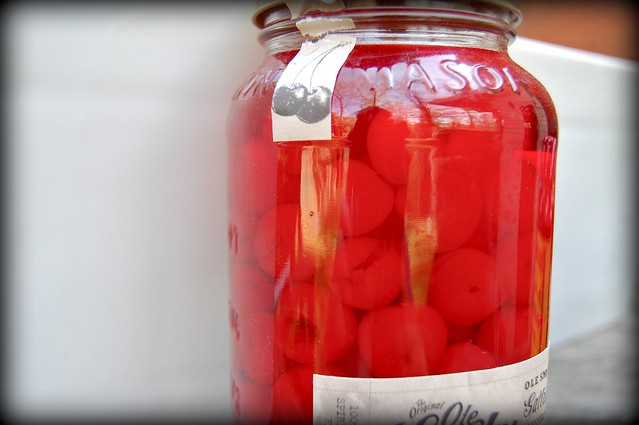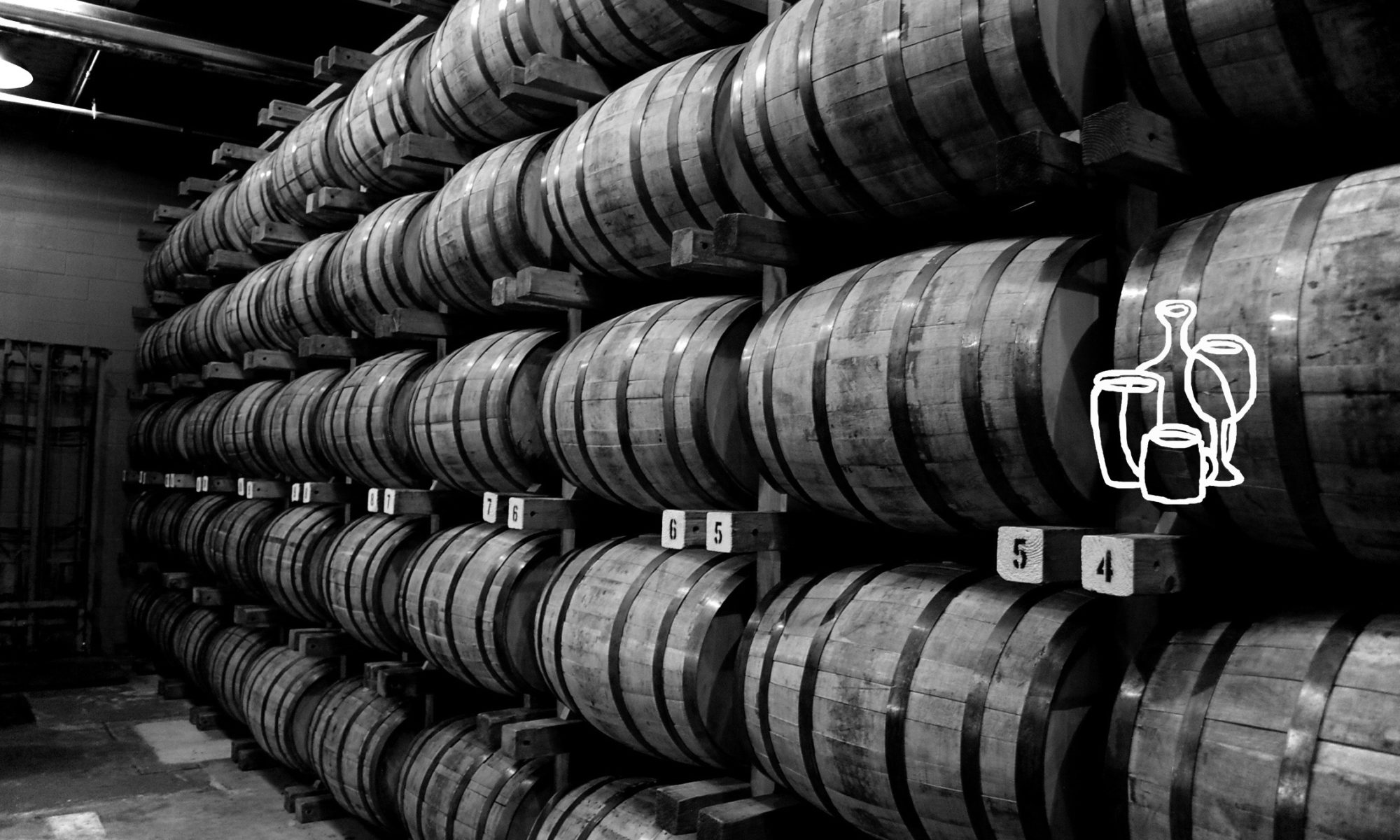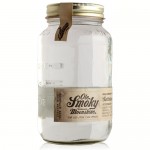 While many folks obsess over which rye whiskey and which sweet vermouth make the most magical Manhattan, not enough attention is paid to the lowly cocktail cherry. I say “lowly” because, unfortunately, what passes for a cocktail cherry in the vast majority of bars around America is a pale imitation of its ancestral archetype. The modern American cocktail cherry is akin to an evil incarnation of all that is wrong with today’s overprocessed food world. Of course, in a truly great cocktail bar, you hopefully won’t find that neon-red, waxed-up and shiny Corvette-paint-job of a cherry that might belong on an ice cream sundae or even in a Shirley Temple, but definitely not in a Manhattan. What you will likely find is either a housemade version or a jar of Luxardo Maraschino cherries. These Luxardo cherries are the real deal, from Italy, since 1821, made with real Marasca cherries, real Marasca cherry juice, real Maraschino liqueur. They are a deep black cherry red. They speak to reality rather than saccarine fantasy.
While many folks obsess over which rye whiskey and which sweet vermouth make the most magical Manhattan, not enough attention is paid to the lowly cocktail cherry. I say “lowly” because, unfortunately, what passes for a cocktail cherry in the vast majority of bars around America is a pale imitation of its ancestral archetype. The modern American cocktail cherry is akin to an evil incarnation of all that is wrong with today’s overprocessed food world. Of course, in a truly great cocktail bar, you hopefully won’t find that neon-red, waxed-up and shiny Corvette-paint-job of a cherry that might belong on an ice cream sundae or even in a Shirley Temple, but definitely not in a Manhattan. What you will likely find is either a housemade version or a jar of Luxardo Maraschino cherries. These Luxardo cherries are the real deal, from Italy, since 1821, made with real Marasca cherries, real Marasca cherry juice, real Maraschino liqueur. They are a deep black cherry red. They speak to reality rather than saccarine fantasy.
 I love cherries. I really do. Especially the ones you can buy on the side of the road in the heat of summer, in places where they actually grow cherry trees. There’s nothing quite like the joy of spitting out cherry seeds at sixty miles an hour as you cruise down a country highway – except maybe the joy of reaching the end of a good Manhattan and finding a perfectly delicious Maraschino cherry waiting for you at the bottom of the glass. In the name of cocktail science, I undertook a taste test of three different cherries – the classic Luxardo Maraschino, an American take on this classic by H&F Bottle Shop in Atlanta (but using Balaton cherries from Michigan), and a Southern-fried “moonshine” version from Ole Smoky Distillery in Tennessee.
I love cherries. I really do. Especially the ones you can buy on the side of the road in the heat of summer, in places where they actually grow cherry trees. There’s nothing quite like the joy of spitting out cherry seeds at sixty miles an hour as you cruise down a country highway – except maybe the joy of reaching the end of a good Manhattan and finding a perfectly delicious Maraschino cherry waiting for you at the bottom of the glass. In the name of cocktail science, I undertook a taste test of three different cherries – the classic Luxardo Maraschino, an American take on this classic by H&F Bottle Shop in Atlanta (but using Balaton cherries from Michigan), and a Southern-fried “moonshine” version from Ole Smoky Distillery in Tennessee.
 Let’s start with the original, Luxardo. The ingredient list surprises with a few more entries than one might expect – Marasca cherries, Marasca cherry juice, Luxardo Maraschino liqueur, sugar, but then also flavors, natural color, glucose, citric acid. Nothing wrong there, but interesting to see all that goes in to making the classic Maraschino cherry. In the jar, these cherries bear a dark black tint with just a hint of purplish red. The syrup is thick and, yes, syrupy, with an equally deep dark cherry red color to it. When you bite into one, a base sour note kicks in first, followed by a rich dark cherry flavor surrounded by subtle nutty and earthy notes. There’s a slightly petrified crispness to the texture of the cherries, maybe slightly more than I care for, that lets you know they’ve been hanging out in sugar and liqueur for a while. In a Manhattan, they deliver a satisfying range of bitter to sweet fruit that comes on strong at the end. There is a reason this is the standard bearer, as the bitter and sweet fruit accents a cocktail incredibly well. 12.7oz for $16 or so
Let’s start with the original, Luxardo. The ingredient list surprises with a few more entries than one might expect – Marasca cherries, Marasca cherry juice, Luxardo Maraschino liqueur, sugar, but then also flavors, natural color, glucose, citric acid. Nothing wrong there, but interesting to see all that goes in to making the classic Maraschino cherry. In the jar, these cherries bear a dark black tint with just a hint of purplish red. The syrup is thick and, yes, syrupy, with an equally deep dark cherry red color to it. When you bite into one, a base sour note kicks in first, followed by a rich dark cherry flavor surrounded by subtle nutty and earthy notes. There’s a slightly petrified crispness to the texture of the cherries, maybe slightly more than I care for, that lets you know they’ve been hanging out in sugar and liqueur for a while. In a Manhattan, they deliver a satisfying range of bitter to sweet fruit that comes on strong at the end. There is a reason this is the standard bearer, as the bitter and sweet fruit accents a cocktail incredibly well. 12.7oz for $16 or so
 On to a modern rendition, from H&F Bottle Shop. (If it seems I have a penchant for this particular purveyor, it’s true – after all, who else is in the South is selling housemade cocktail cherries and Bloody Mary mix alongside a killer wine and spirits selection?) So, first, there are the Balaton cherries, which are “harvested once a year” in Michigan and “may be the best sour cherries grown in the States” (according to none other than H&F Bottle Shop!). Then, H&F uses a combination of cranberry juice, sugar, and Maraschino liqueur to pack the cherries and create a nice light syrup. The color here verges to a purple Kalamata olive territory, decidedly lighter than the Luxardos but still dark on the way to black. The syrup is relatively thin and tart, thanks to that cranberry juice. The taste is a little sour, a little sweet, and very natural, much closer to what you expect from a fresh cherry than something out of a factory. In a Manhattan, these deliver a balanced flavor that is tremendously complementary to the rye and vermouth. And the texture is not too soft, not too crisp, really just right. Big props to H&F for finding a way to better Luxardo, at least in my book. Pricey? Yes. Worth it? I think so, at least for a special treat every once in a while. 5oz for $16.
On to a modern rendition, from H&F Bottle Shop. (If it seems I have a penchant for this particular purveyor, it’s true – after all, who else is in the South is selling housemade cocktail cherries and Bloody Mary mix alongside a killer wine and spirits selection?) So, first, there are the Balaton cherries, which are “harvested once a year” in Michigan and “may be the best sour cherries grown in the States” (according to none other than H&F Bottle Shop!). Then, H&F uses a combination of cranberry juice, sugar, and Maraschino liqueur to pack the cherries and create a nice light syrup. The color here verges to a purple Kalamata olive territory, decidedly lighter than the Luxardos but still dark on the way to black. The syrup is relatively thin and tart, thanks to that cranberry juice. The taste is a little sour, a little sweet, and very natural, much closer to what you expect from a fresh cherry than something out of a factory. In a Manhattan, these deliver a balanced flavor that is tremendously complementary to the rye and vermouth. And the texture is not too soft, not too crisp, really just right. Big props to H&F for finding a way to better Luxardo, at least in my book. Pricey? Yes. Worth it? I think so, at least for a special treat every once in a while. 5oz for $16.
 As for Ole Smoky, you can see right away that this jar of cherries is closer to that jar of cherries that is found in too many bars around America – bright red like cherry flavored candy. Visually appealing? Absolutely, like candy to a baby. Tasty? We’ll see… These cherries don’t sit in syrup, but rather in 100 proof grain neutral spirits with flavor added – AKA “moonshine” (?). The taste? Well, my notes said, “ouch, horrible, high alcohol, not much fruit.” I should probably stop there. In a Manhattan, my note simply read, “egad.” I’ll definitely stop there. 750 ml for $24 or so
As for Ole Smoky, you can see right away that this jar of cherries is closer to that jar of cherries that is found in too many bars around America – bright red like cherry flavored candy. Visually appealing? Absolutely, like candy to a baby. Tasty? We’ll see… These cherries don’t sit in syrup, but rather in 100 proof grain neutral spirits with flavor added – AKA “moonshine” (?). The taste? Well, my notes said, “ouch, horrible, high alcohol, not much fruit.” I should probably stop there. In a Manhattan, my note simply read, “egad.” I’ll definitely stop there. 750 ml for $24 or so
What have we learned here? Well, first off, ditch that whole notion of cocktail cherries being “cherry red” and opt for something closer to midnight black. Grab some Luxardo if you can find them, call up H&F Bottle Shop if you’re eager for a more artisanal approach, or wait until summer and make up a batch of your own from fresh cherries. That is, if you can stop yourself from eating them first.
















